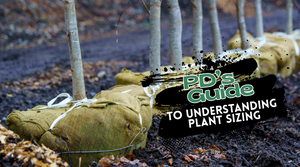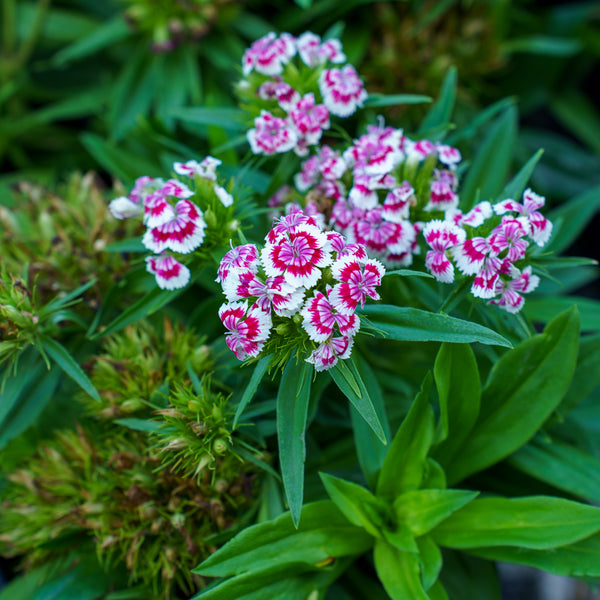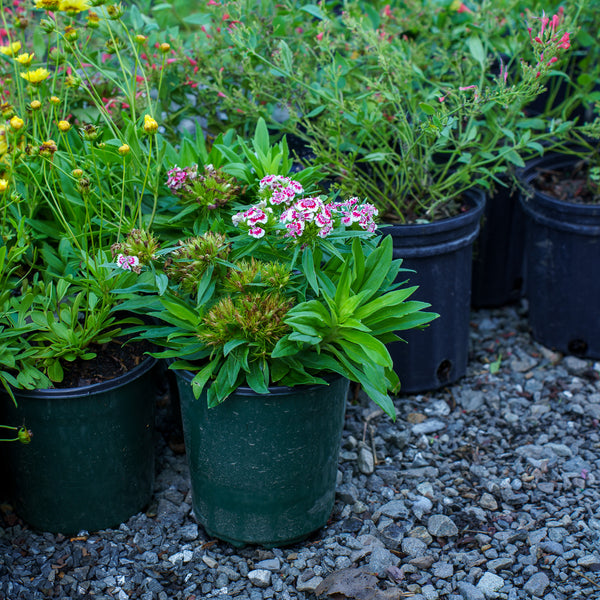Red Picotee Dianthus
Red Picotee Dianthus (Dianthus barbatus 'Red Picotee')
Red Picotee Dianthus (Dianthus barbatus 'Red Picotee') is a compact, floriferous sweet william prized for striking bicolor clusters that combine crisp white petals edged and brushed with rich red, plus a sweet clove like perfume. Blooming in late spring to early summer with possible repeat after a light shear, this short lived perennial or biennial adds bold, vintage charm to borders, cottage gardens, and containers. Its tidy clumping habit provides clean lines and dependable color in sunny, well drained sites.
Distinctive Features
Large, dome shaped heads packed with frilly, picotee blooms show vivid red margins and a contrasting eye; the spicy fragrance invites close up enjoyment and makes excellent cutting stems for small bouquets.
Growing Conditions
- Sun Exposure: Full sun for best flowering; tolerates light afternoon shade in hot regions.
- Soil: Well draining, fertile, neutral to alkaline soil; avoid heavy, waterlogged sites.
- Water: Moderate; water deeply then allow the top inch to dry between waterings.
- USDA Hardiness Zones: 3 to 9 (often grown as a cool season annual or biennial).
- Mature Size: About 12 to 20 inches tall and 10 to 14 inches wide.
- Bloom Time: Late spring to early summer; quicker rebloom with deadheading or a light shear.
Ideal Uses
- Cottage and Cutting Gardens: Fragrant, long lasting stems for vases and posies.
- Edging and Borders: Neat clumps define paths and bed fronts with high contrast color.
- Containers and Window Boxes: Compact habit and synchronized bloom create instant impact.
- Pollinator Plantings: Nectar and pollen support bees and butterflies.
- Mass Plantings: Repeated in drifts, the picotee pattern reads clearly from a distance.
Low Maintenance Care
- Watering: Keep evenly moist during establishment; thereafter water deeply but infrequently.
- Deadheading: Remove spent clusters or shear lightly after peak to encourage fresh buds.
- Feeding: Mix in compost at planting and apply a light, balanced fertilizer in spring.
- Mulch and Soil: Use a thin gravel or bark layer to keep crowns dry and improve drainage.
- Lifecycle Notes: Often treated as a biennial; allow some seed for naturalized return if desired.
Why Choose Red Picotee Dianthus?
- Bold Picotee Color: Clean white petals edged in red give classic, high contrast appeal.
- Fragrant and Pollinator Friendly: Spicy clove scent draws in bees and beneficials.
- Reliable and Versatile: Performs in beds, borders, and containers with minimal fuss.
- Heat and Drought Tolerant: Thrives in sunny, lean soils once established.
- Easy Care: Simple deadheading extends the display and keeps plants neat.
Conclusion
Dianthus barbatus 'Red Picotee' pairs vintage picotee charm with sweet fragrance and sturdy garden performance, delivering a standout late spring show and tidy habit in bright, well drained gardens.

OUR SIZING
Not sure what 2 inch B&B or 30 Gallon Clump really means? This guide breaks down all our plant size terms so you know exactly what to expect, whether you're ordering online or picking up at our nursery. From caliper measurements to container volumes, we've decoded our system to help you shop with confidence.

Plant Detectives Shipping Guide
Nationwide plant shipping made easy. Learn how we ship trees, shrubs, annuals and perennials. No order too big or too small. Fast, careful, and contractor-friendly.


